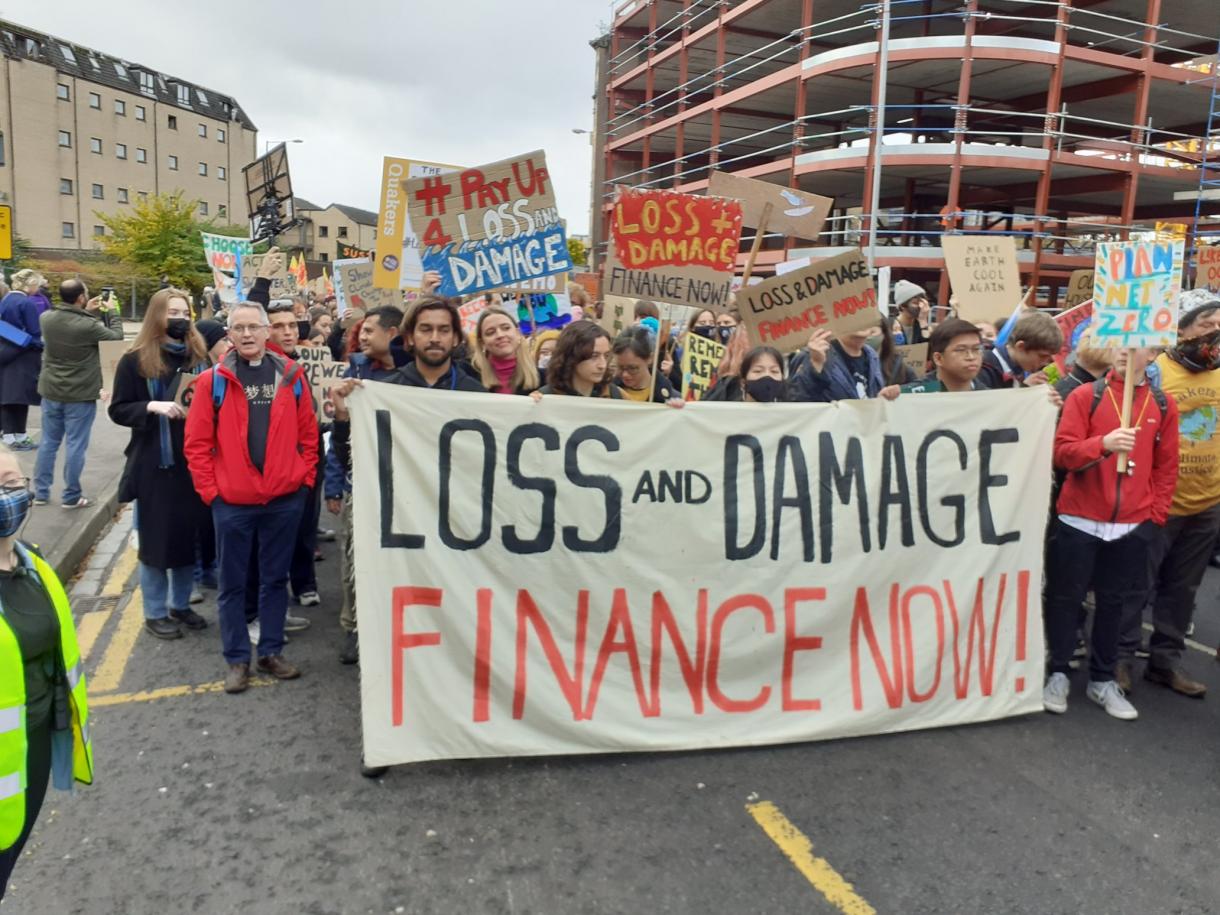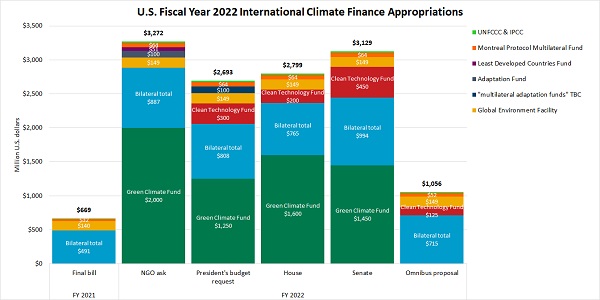As climate change worsens, the United States under-delivers on finance promises to hardest hit countries
By
Lorah Steichen
Posted:
|
Climate Change

Image source: The Heinrich Boell Foundation
Joe Biden started his presidency promising to restore U.S. credibility on climate action and international cooperation.
On his first day in office, President Biden moved to rejoin the Paris Climate Accord. Soon after, he convened a leaders climate summit where he promised to double Obama-era spending on international climate finance, meant to help poorer countries cope with climate impacts and transition away from fossil fuels, to $5.7 billion annually. During the U.N. general assembly in September, President Biden doubled that ambition once more, pledging to work with Congress to double funds by 2024 to $11.4 billion per year.
And yet, the $1.5 trillion budget deal President Biden signed into law last week allocates a measly $1 billion for international climate finance—a slight increase above Trump-era spending, far short of what the administration requested, and a fraction of the $11.4 billion that the administration promised to deliver by 2024. At the same time, the bipartisan deal allocates $782 billion for the military and war. In other words, the United States will spend more than twice as much every day on the military than it does in a single year on international climate finance.
If the United States continues to inch up international climate investments at this rate, it will take until 2050 to get to that $11.4 billion goal.

Image source: Climate Change News
Over a decade ago at COP15 in Copenhagen, rich countries agreed to collectively provide $100 billion per year for climate adaptation and mitigation in developing countries by 2020. That amount, which was politically manufactured and not even close to meeting actual need, still hasn’t been met. To make matters worse, 80% of the funds that have been delivered are in the form of loans or private finance, instead of grants.
Even by the inadequate $100 billion metric, the United States falls short. According to a relatively conservative analysis by the Overseas Development Institute, the U.S. share of the $100 billion climate finance goal should be about $43 billion per year based on the size of our economy and historical emissions.
When it comes to meeting actual needs and paying our fair share - $1 billion is an even smaller drop in the bucket. Last year major climate groups, attempting to estimate actual needs, called on the United States to deliver at least $800 billion cumulatively by 2030—averaging roughly $90 billion annually—as a good faith down payment toward our fair share.
With the ink hardly dry on the latest major U.N. report warning of intensifying climate impacts and the growing need for climate finance, U.S. climate envoy John Kerry assured that U.S. contributions will help rich countries reach the $100 billion mark by 2023. But while military spending continues to grow, the U.S. repeatedly under-delivers on the climate investments we need in this country, and the payments we owe to the hardest hit countries across the globe.
Redirecting even a modest 10% of the military budget to meet urgent climate finance needs would go a long way toward paying our fair share.